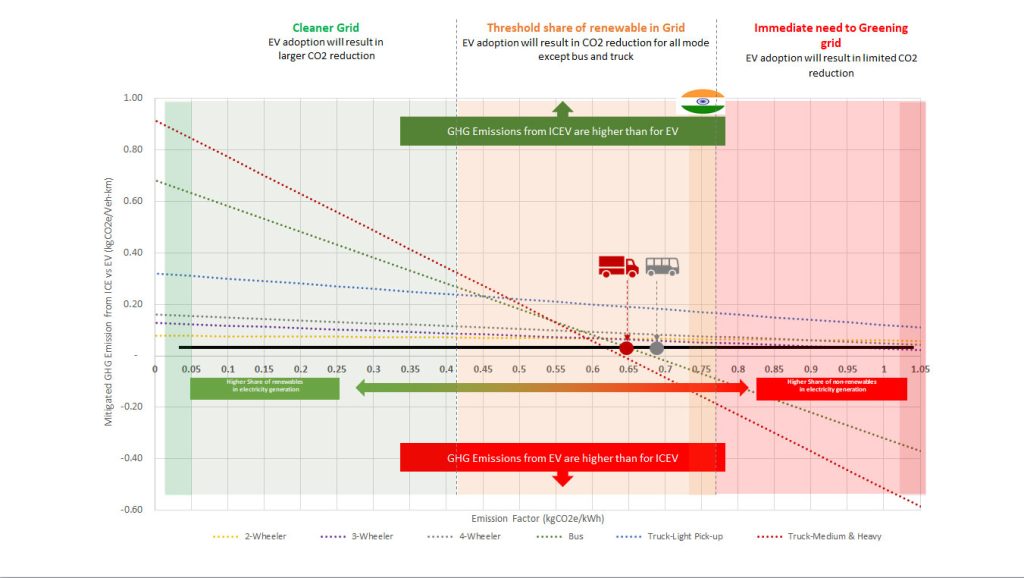
All EV segments are Green: A myth or reality?

Electric Vehicles (EVs) are fundamentally 5-6 times more efficient than Internal Combustion Engines (ICEs) because they convert energy directly into motion, as opposed to ICEs, which must first burn fuel to produce heat before converting that heat into motion. Furthermore, the use of EVs and charging stations is expected to increase overall energy efficiency in the transportation sector while reducing fossil fuel use and improving energy security. EVs have a high potential for reducing greenhouse gas emissions because increasing energy efficiency reduces GHG emissions significantly. Many countries have pledged to reduce their GHG emissions[1] by adopting EVs in a variety of vehicle categories. But are all EV segments green? A thorough examination of each variable reveals that they are, butthe answer is nuanced and includes asterisks.
It is highly debatable whether all EV segments are environmentally friendly, owing to the reliance on the electrical source used to charge the vehicle. EVs, for example, are easily justifiable in countries where the majority of electricity is generated using cleaner, fossil-fuel-free technologies (such as nuclear and hydroelectricity).
Power generation in European countries has recently shifted its emphasis to greener technology. The majority of energy produced in developing countries such as China and India, on the other hand, is produced using coal, and as a result of their rapidly expanding economies, they have grown to play a significant role in global CO2 emissions. To better understand the eventual reduction of GHG emissions from various EV categories, it is necessary to investigate their implementation in developing countries. Because increasing the number of EVs without first assessing their GHG emissions could have a negative impact on climate mitigation efforts.
Vehicle emissions are produced during the production process (manufacturing), while the vehicle is being driven (in-use), and after it has finished its useful life. Only in-use emissions will be covered in this article; later articles will go into greater detail about lifecycle emission assessments. As indicated in the figure below, mitigation of GHG emissions from ICE vs. EV is done nationwide using all grid parameters.
A nation’s grid factor is a crucial metric to consider when evaluating emissions across various EV segments (GHG emission per unit of electricity production). Higher grid factors are associated with greater non-renewable energy use in a nation, and vice versa (as plotted on x-axis of diagram below).
In the case of India, with a grid factor of 0.75, the GHG mitigation potential is positive for all EV segments except buses and trucks as shown in the figure.
[1] GHGs included under UNFCCC are carbon dioxide (CO2), methane, nitrous oxides, perfluorocarbons, hydrofluorocarbons, sulfur hexafluoride, and trifluoride nitrogen. Only CO2, methane, and nitrous oxide are relevant to the transport sector. However, according to UNFCCC methodologies for determining emissions from the transport sector, nitrous oxide emissions are very marginal. Therefore, only CO2 emissions are included and, in addition for gaseous fuel-powered engines, emissions of methane

* kgCO2e/Veh-Km: kilogram of carbon dioxide equivalent emission per Vehicle kilometre travelled * kgCO2e/kWh: kilogram of carbon dioxide equivalent emission per kilowatt-hour * ICEV: Internal combustion engine vehicle*EV: Electric vehicle *Fuel efficiency of ICE vehicle segment: 2Wheeeler – 25 kms/litre; 3-Wheeler – 25 kms/litre; 4-Wheeler – 20 kms/litre; Bus – 5 kms/litre; Truck Light pick-up – 10 kms/litre; Truck-Medium & Heavy – 4kms/litre *Fuel efficiency of EV segment: 2Wheeeler – 52 kms/kWh; 3-Wheeler – 10 kms/kWh; 4-Wheeler – 9 kms/kWh; Bus – 1 kms/kWh; Truck Light pick-up – 5 kms/kWh; Truck-Medium & Heavy – 0.7 kms/kWh *Only In-use vehicle emissions has been accounted
Source: pManifold Analysis
It should also be noted that in countries with a grid factor greater than 0.8 kgCO2e/kWh, decarbonizing the grid should be the top priority. Because the impact of EVs on GHG reduction in such countries will be small, with high marginal abatement costs. According to experts, starting with EVs and decarbonizing the grid in parallel to promote EVs is not an effective strategy because grid decarbonization, in general, takes a long time due to the long life span of energy production units.
EVs are green for most of the vehicle segments except bus and medium & heavy-duty trucks in terms of in-use GHG emissions
Asian countries with a high share of renewable electricity production, such as Armenia, Bhutan, Georgia, the Kyrgyz Republic, the Lao People’s Democratic Republic, Nepal, and Tajikistan, will see the greatest CO2 reductions from EV deployment, whereas India, Indonesia, Kazakhstan, Mongolia, and Turkmenistan will see limited CO2 reductions.[1]
Thus, it is discovered that EVs are green in terms of in-use GHG emissions for the vast majority of vehicle segments, with the exception of buses and medium and heavy-duty trucks[2], even when the electric grid is heavily reliant on fossil fuels.
[1] Country-wise list of Grid emission factors is given by IGES
[2] Bus and medium & heavy-duty truck will result in significant GHG reductions if the grid factor is below 0.7 kgCO2e/kWh\


